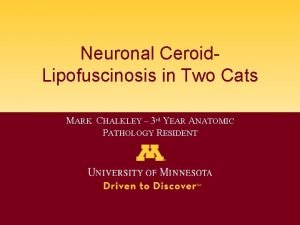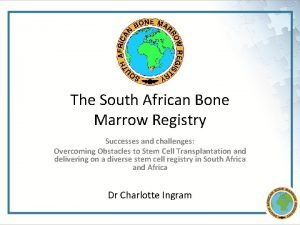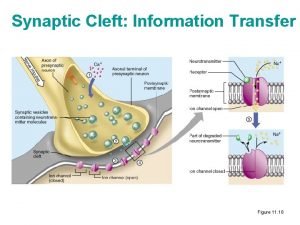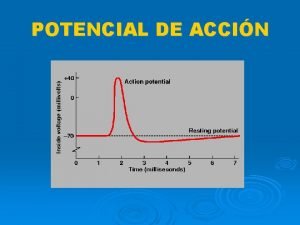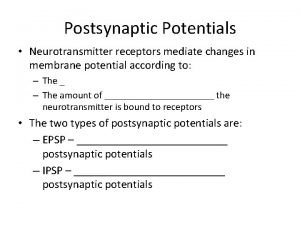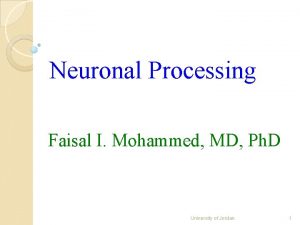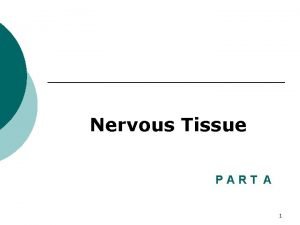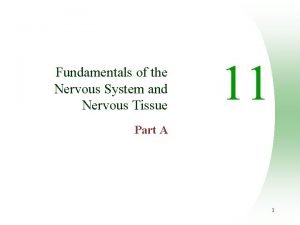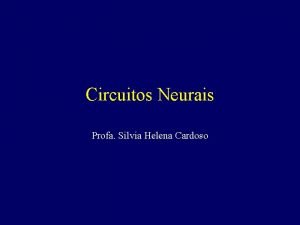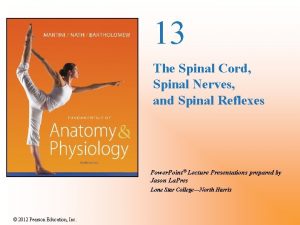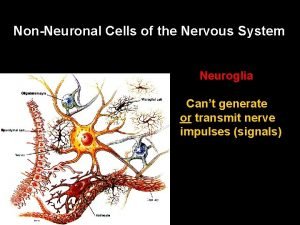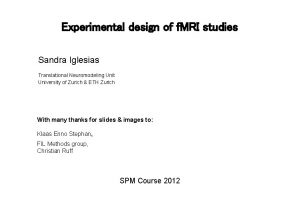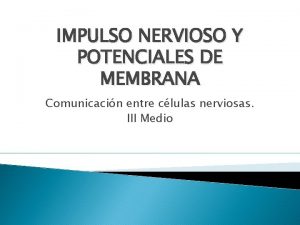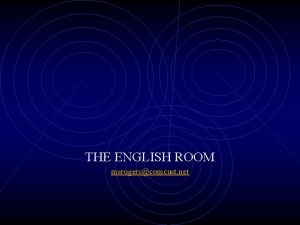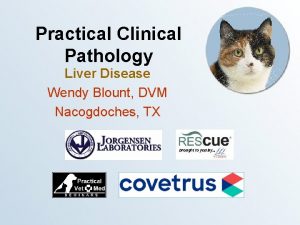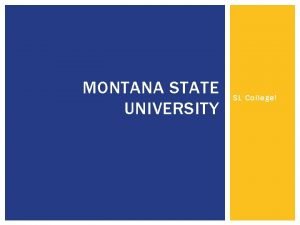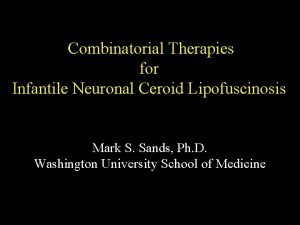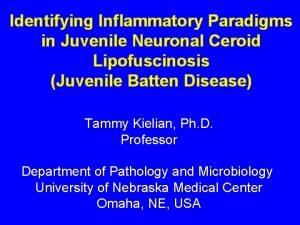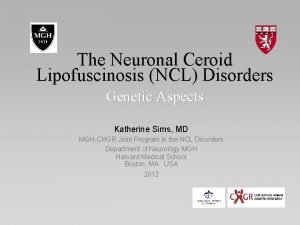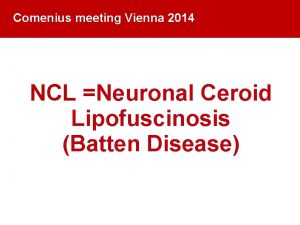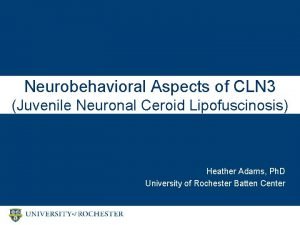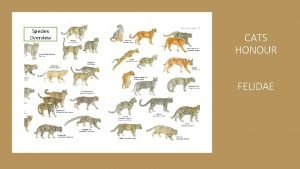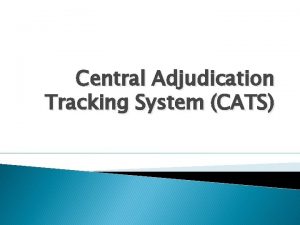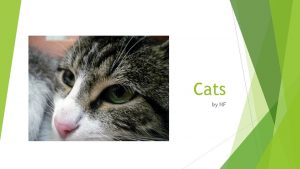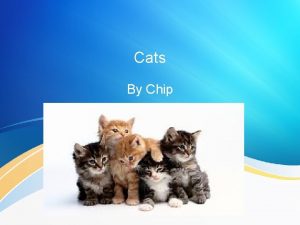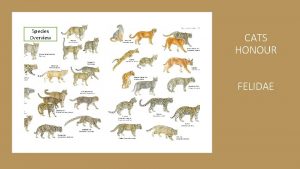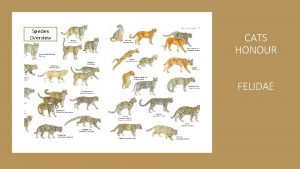Neuronal Ceroid Lipofuscinosis in Two Cats MARK CHALKLEY
























- Slides: 24

Neuronal Ceroid. Lipofuscinosis in Two Cats MARK CHALKLEY – 3 rd YEAR ANATOMIC PATHOLOGY RESIDENT

History & Signalment • Similar history and signalment for both case #1 and #2: - Both between 1 or 2 -years old male DSH cats - Submitted to animal shelters as strays with no previous history - Prolonged, progressive history of visual dysfunction (running into walls, difficulty tracking moving objects) and neurological deficits (falling, frantic running, behavior abnormalities) • Both euthanized and submitted for necropsy

Case #1 Control

Cerebral Cortex

Normal Case #2

H&E

H&E LFB/ H&E AF PAS

Immunofluorescence • Normal and abnormal


H&E GFAP

Normal Case #2

Lesion Distribution Anatomic Location Lipopigment/Ceroid Neuronal/ Cell Loss Gliosis 1 2 1 2 Cerebral cortex +++ ++ Thalamus + ++ + + Hypothalamus + + + Basal Nuclei + ++ + + Hippocampus +++ + + ++ + Cerebellum ++ + Spinal Cord + ++ + + Retina + + ++ - - Extra-CNS tissues - - - * + = mild, ++ = moderate, +++ = severe; 1 = Case No. 1; 2 = Case No. 2

Disease Cause Organs affected 1. Ceroid. Lipofuscinoses Unknown or lysosomal protein defects Predominantly cerebrum, cerebellum & retina in cats but can be in many tissues 2. Gangliosidoses Lysosomal enzyme deficiency CNS, PNS, liver, kidney, lymph n. , cardiac Purkinje cells 3. Glucocerebrosidoses 4. Mannosidosis (glycoproteinosis) 5. Mucopolysaccharidoses (MPS VII in cats) Glucocerebrosidase deficiency Lysosomal α or β mannosidase or α-L-fucosidase deficiency Various enzyme deficiencies CNS, macrophages (esp liver, LNs) Many cells (neurons, epithelium, endothelium, mesenchyme) Predominantly bone and other connective tissues, neurons Storage material Special stains Subunit c of mitochondrial ATPase, amyloid-β, precursor protein, SAPs Magneta with PAS LFB+ Sudan black+ Autofluorescent Glycosphingolipids PAS+ LFB+ Sudan black+ Glucocerebrosides PAS+ in macs PAS – in neurons LFB+ Carbohydrate (saccharides with mannose residues) PAS+, diastase resistant, Variably alcian blue+ Glucoaminoglycan Variable PAS+ LFB+ Sudan black+ Autofluorescent Lectin histochemistry EM Variable to nil reactivity Curvilinear bodies Fingerprint profiles Granular osmophilic deposits O-linked Membranous cytoplasmic bodies and/or zebra bodies O-linked Twisted, branching tubules or zebra bodies in neurons N-linked Membrane bound vesicles, with floccular material & fine membrane stacks N-linked Empty vesicles, or floccular material /zebra bodies




Ceroid-lipofuscinosis Gangliosidoses Sphingolipidoses & Mucopolysaccharidoses Mannosidoses

Diagnosis Brain, spinal cord, eyes: Degenerative lysosomal storage encephalomyelopathy and retinopathy, widespread, marked, chronic, with neuronal loss and astrogliosis - Consistent with neuronal ceroid-lipofuscinosis (NCL)

Lysosomal Storage Diseases (LSD) What is LSD anyway? • Ly. Sergic acid Diethylamide • Lumpy Skin Disease • Lichenoid-p. Soriasiform Dermatoses • Louisiana School for the Deaf

NCL in Animals and Humans • • • Four main variants – infantile, late-infantile, juvenile, adult 160 mutations in 10 human genes (CLN 1 -10) Lead to defects in 8 known proteins Gene defects also recognized in dogs, sheep and cattle Similar distribution and character of lesions & material Main storage material in animals and humans - subunit c of mitochondrial ATP synthase (SCMAS) or sphingolipid activator proteins A and D (SAPs) • A correlation between the age of clinical onset of disease, ultrastructure of the storage material and the variants of NCL has not been established in animals

Characteristic Lipofuscin vs Ceroid Circumstance of deposition Aging Pathological Location Lysosome Positive Protein Heterogenous mix, amyloid-β protein Subunit c of mitochondrial ATPase, amyloid-β, precursor protein, saposins Lipids Triglycerides, FFA, dolichols Phosphorylated dolichols, phospholipids, neutral lipids Carbohydrates Dolichol-linked oligosaccharides Metals Fe, Cu, Al, Zn, Ca, Mn Predominantly Fe Sudan Black Positive Luxol fast blue Positive PAS Positive Concanavalin A Positive Agglutinin Negative Positive Granular osmophilic deposits Positive Fingerprint profiles Negative Positive Curvilinear bodies Negative Positive Autofluorescence Storage components Histochemistry (including lectins) Ultrastructure *Table adapted from SS Seehafer, DA Pearce, Neurology of Aging 27 (2006), p 580.

Mechanisms of Ceroid Oxidation Accumulation Autophagy Seehafer S & Pearce D (2007) Lysosomal Function

Acknowledgements • ACVP/STP coalition fellowship • Pfizer & Dr Peter Schmidt • University of Minnesota – - Dr Anibal Armien & Dr Gerry O’Sullivan - Electron microscopy laboratory

Questions?
 Mark chalkley
Mark chalkley Jasvir jootla
Jasvir jootla Nadia chalkley uct
Nadia chalkley uct She has two cats
She has two cats Babinski reflex
Babinski reflex Neuronal pool
Neuronal pool Neuronal pool
Neuronal pool Repolarizacion potencial de accion
Repolarizacion potencial de accion Spatial summation and temporal summation
Spatial summation and temporal summation Neural circuits the organization of neuronal pools
Neural circuits the organization of neuronal pools Label the different types of neuronal pools in the figure.
Label the different types of neuronal pools in the figure. Label the different types of neuronal pools in the figure.
Label the different types of neuronal pools in the figure. Neuronal pools
Neuronal pools Circuitos reverberantes
Circuitos reverberantes Figure 13-2 spinal nerves
Figure 13-2 spinal nerves Non neuronal cells
Non neuronal cells Fundamentals of the nervous system and nervous tissue
Fundamentals of the nervous system and nervous tissue Neuronal response
Neuronal response Qué es un impulso nervioso
Qué es un impulso nervioso Fat cats nyc
Fat cats nyc Cinquain poem
Cinquain poem Diamante poem structure
Diamante poem structure Practical clinical pathology
Practical clinical pathology Genetic drift
Genetic drift Smarty cats drop in tutoring
Smarty cats drop in tutoring
